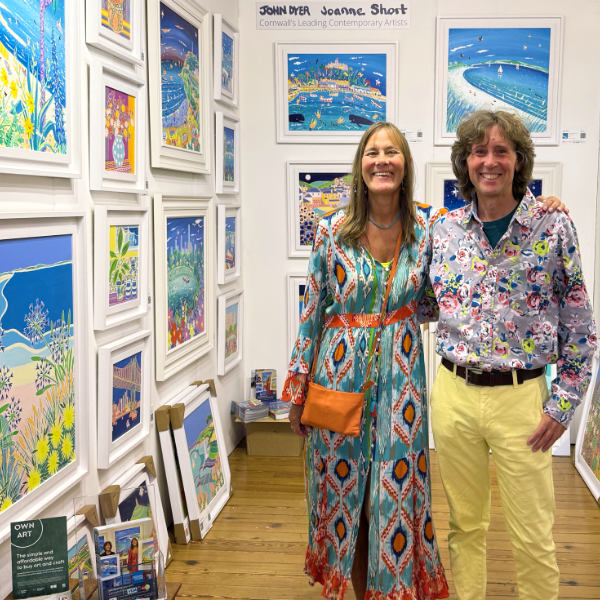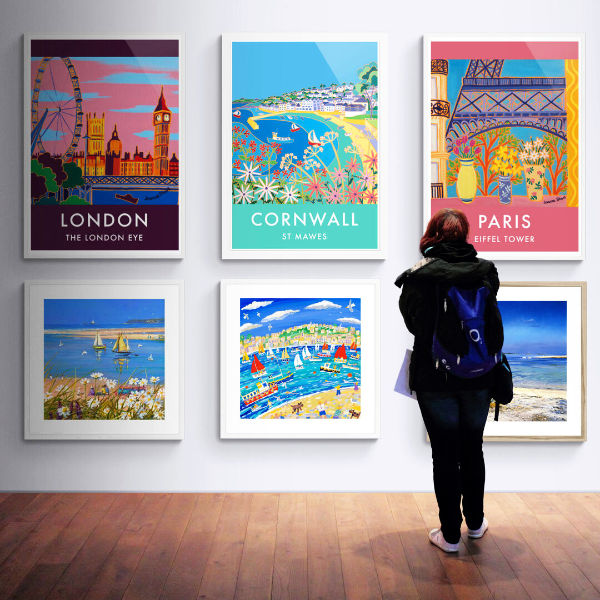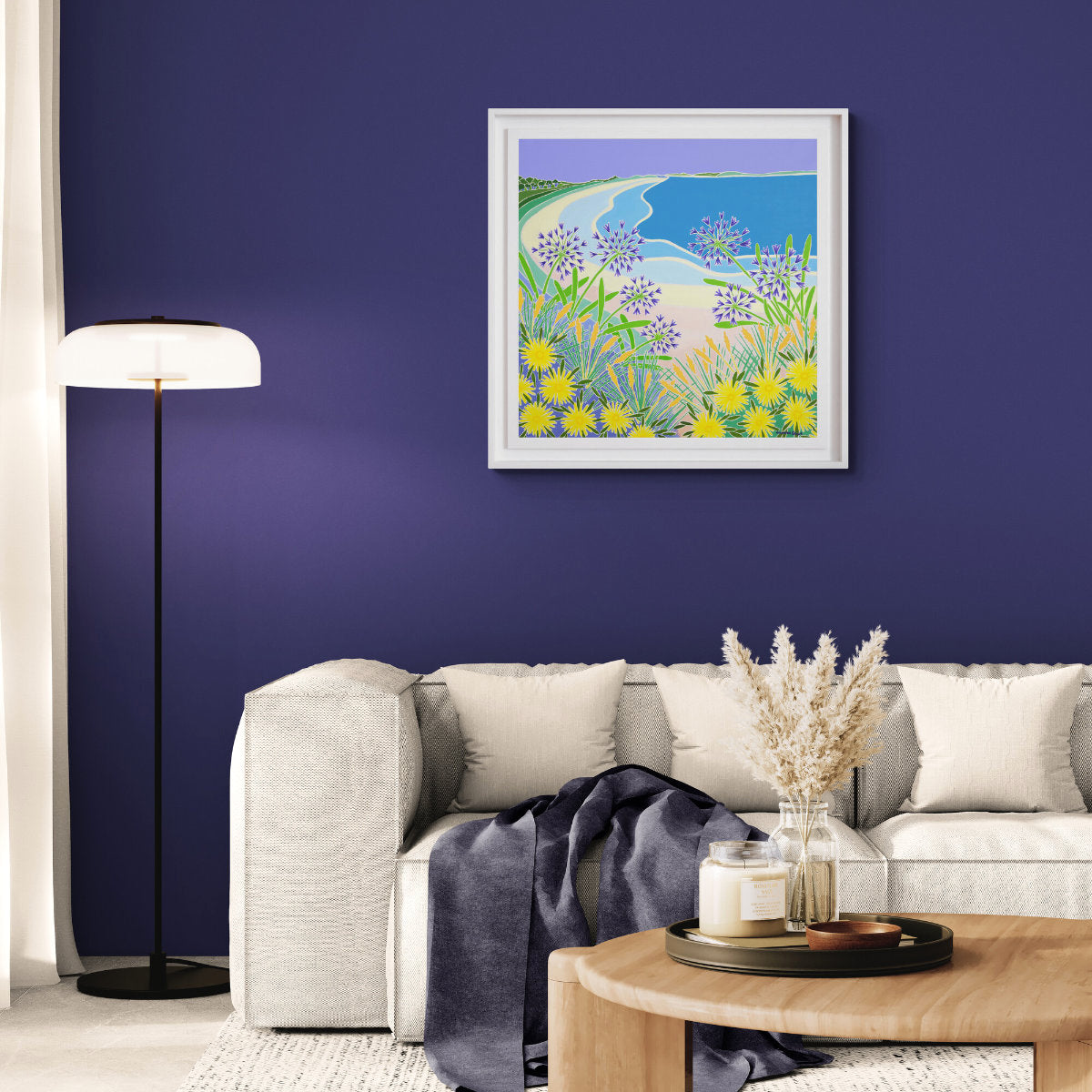Invest in British Art from Cornwall's Leading Artists | Free Worldwide Delivery
JOHN DYER
Original Paintings
New paintings available to buy online now by Cornwall's best loved artist.
JOANNE SHORT
Original Oil Paintings
New paintings available to buy online now by Cornwall's acclaimed colourist painter.
TED DYER
Original Oil Paintings
New paintings available to buy online by Cornwall's best known impressionist artist.
All Original Paintings
View all of the new original paintings that we have available to buy online now in our online gallery.
The ones you missed
View all of the recently sold original paintings by our Cornish artists John Dyer, Ted Dyer and Joanne Short.
Cornwall Art Prints
Museum-quality prints. Framed, Unframed, Signed & Wall Art Posters
Art T-Shirts, Hats & Hoodies designed in Cornwall. Eco-friendly. Free worldwide delivery.
Christmas Collection 2025
Stunning new painting collection by Cornish artists John Dyer & Joanne Short now available to view and buy.
Spirit of the Harvest | Eden Project
October 2025 - February 2026
New major John Dyer paintings inspired by global harvests, with field paintings from Peru, Costa Rica & the Philippines.
Colours of the South of France
New collection of French Riviera and Provence paintings by John Dyer opens on October 18th 2025.
Explore our Previous Exhibitions
Enjoy exploring our previous exhibitions online and discover extraordinary paintings you can own today.
Press Coverage and Testimonials
Art Collectors Club
Enjoy 5% off your first order, regular offers, exclusive exhibition invitations and artist and gallery updates in our email newsletter.
Edward Hopper (1882–1967) was a defining American artist known for his evocative depictions of urban isolation and rural quietude. Born in Nyack, New York, he demonstrated artistic talent from an early age and pursued formal training at the New York School of Art, studying under Robert Henri, a key figure in the Ashcan School. Henri’s emphasis on realism and everyday subjects greatly influenced Hopper’s approach to painting.
After completing his studies, Hopper spent several years working as an illustrator and made multiple trips to Europe, particularly Paris, between 1906 and 1910. Unlike many of his contemporaries, he remained largely indifferent to the avant-garde movements of the time, preferring the realism of masters like Edgar Degas and Édouard Manet. Despite these influences, Hopper’s style remained distinctly American, shaped by his keen observations of the country’s evolving urban and rural landscapes.
Hopper’s breakthrough came with his painting House by the Railroad (1925), which established many of the themes that would define his work—loneliness, introspection, and the interplay of light and shadow. His signature use of stark geometry, subdued colour palettes, and carefully composed figures created a sense of narrative ambiguity, drawing viewers into quiet yet emotionally charged scenes.
Among his most famous works, Nighthawks (1942) stands as an enduring image of mid-century America. The painting’s depiction of an all-night diner, with isolated figures bathed in artificial light, captures Hopper’s fascination with urban solitude. Other notable works, such as Automat (1927) and Gas (1940), continue this exploration of contemporary life, often featuring lone figures immersed in thought.
Hopper’s mastery of light played a crucial role in his compositions, whether depicting the crisp brightness of the seaside in Rooms by the Sea (1951) or the deep shadows of a city street. His paintings, though outwardly simple, contain a quiet psychological depth, inviting interpretation.
Throughout his career, Hopper remained committed to realism even as modernism gained prominence. His wife, Josephine Nivison Hopper, an artist in her own right, played a crucial role in documenting and promoting his work. Until his death in 1967, Hopper continued to paint the changing face of America with an unmatched sensitivity to mood and atmosphere. His influence extends far beyond his lifetime, shaping generations of artists and filmmakers drawn to his unique vision of solitude and space.
Explore our main art collections to find perfect original paintings, limited edition signed prints, open-edition prints, wall art prints and posters & artist designed gifts.
Exclusive access to exhibitions, new art, and collector news.
N.B. Please confirm your sign-up – check your email (or junk) and add sales@johndyergallery.com
Small but beautiful. Their cheer gives me happy memories of my husband and my parents and lights up the room.
We first visited Holywell Bay about 10 years ago and absolutely fell with in love with the place.
So much so we've been lucky enough to visit back twice a year every year since. We first came across John work in St Ives a few years back and had
our eye on this painting for a while. It just captures everything we love about the beach. The joy, the sense of family, the feeling of the summer. The quality of the print is excellent. Feels and looks like the actual painting.
The quality of the print is excellent and
Thanks arrived safely and is now on display
I’ve bought this picture for my brother who lives looking out on Fistral Beach as it’s so quirky!
Just what we wanted..perfect.
We love visiting Fowey and this picture just shows the vibrancy and fun that we associate with Fowey . Makes us smile every time we look at this picture
A great print and fair price, promptly deivered. Thanks.
Bought this note book for my daughter. I know she will love it. Art work is stunning as always. The quality of the paper is excellent. My daughter will enjoy using it, and looking at a little bit of Cornwall every time she does.
Great quality t-shirt with the fabulous, gorgeous picture on it 😀
Joanne's use of colour and Cornish motifs make me smile.
Excellent mugs with great artwork
Wonderful paintings, lovely vibrant colours, really evocative of Cornwall, the anticipation of a different, fabulous image for the year to come is something to look forward to.
We’ll all be milwionaires
or not but we’ll have a bright and cheerful Dyer Calendar to gaze upon- love it
I get John’s calendars every year and this year is just as brilliant as always. Good quality, Quickly delivered and beautiful.
Needed to speak to someone about delaying delivery, left a voice message and got a very helpful John himself call back quite quickly and everything was sorted the the print arrived exactly when needed.
Love the picture too - looks ace in a proper frame on the wall and floods the room with colour and memories.




